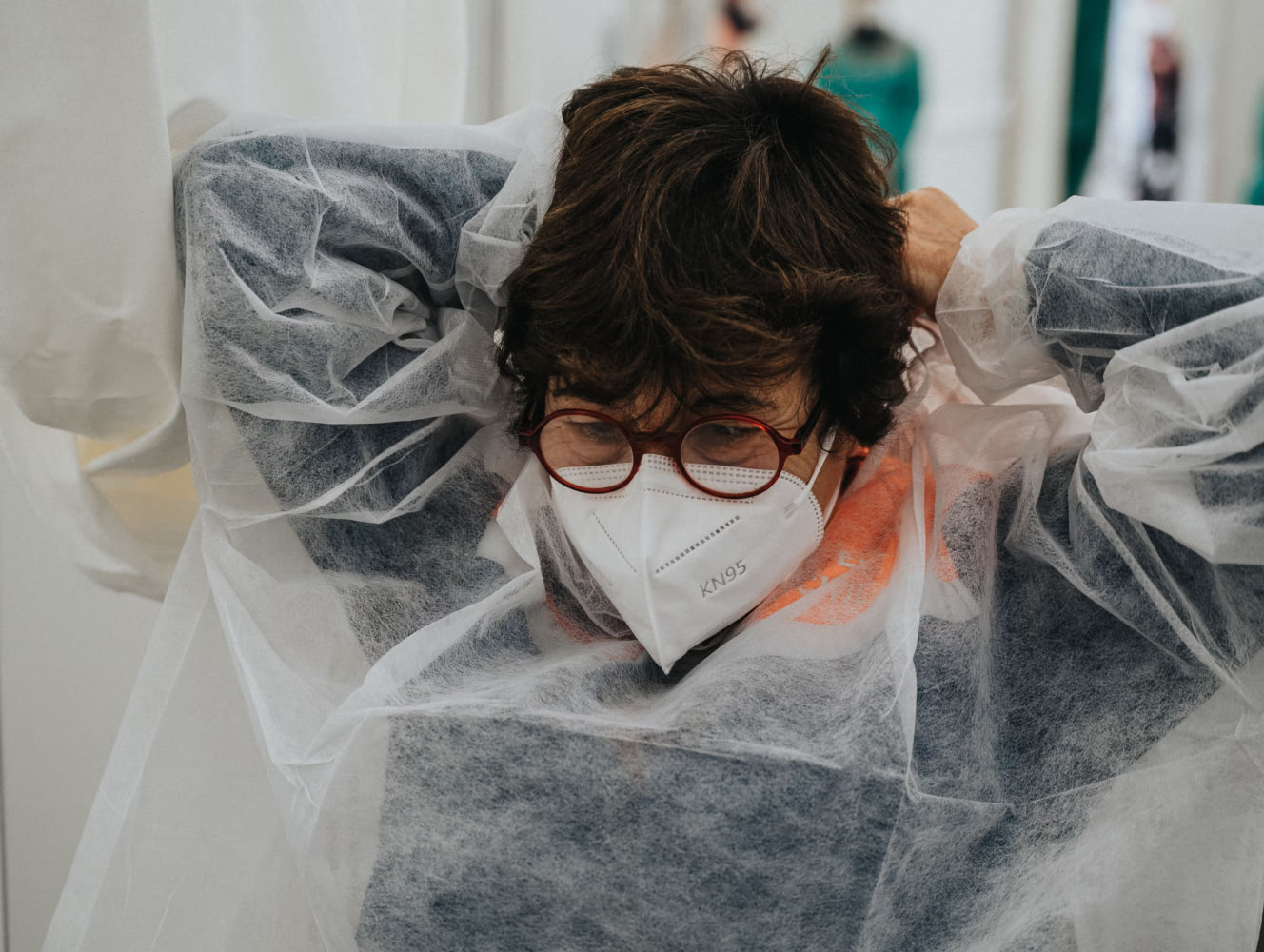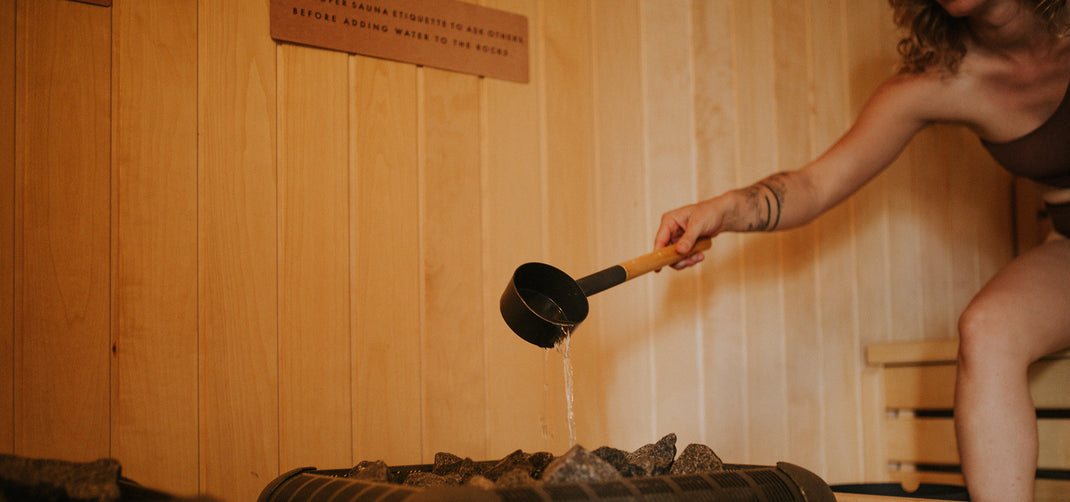Cardiometabolic Health Benefits of Sauna for People with High Stress Occupations
5 Min Read / Dr. Justine Grosso
Since the COVID-19 pandemic began, rates of mental health symptoms have increased and professionals who already have high stress jobs have had to contend with even more work stress. In Mental Health Americas Mind the Workplace 2023 Report, 81% of workers reported that workplace stress impacted their mental health and 75% said it affected their relationships. However, work stress does not just impact our emotional life. Notably health care workers [1] and other high-stress occupations (HSO; law enforcement, military, emergency personnel) [2] are especially at risk for cardiometabolic diseases (i.e., heart attack, stroke, diabetes, insulin resistance) compared to the general population. With the demands on these busy professionals, stress management techniques like sauna bathing, which targets cardiovascular risk [3] are crucial.
What is stress and what are the most stressful jobs?
Stress has always been a part of the human experience; however, certain occupations bring more stress than others. The Center for Disease Control (CDC) defines job stress as “harmful physical and emotional responses that occur when the requirements of the job do not match the capabilities, resources, or needs of the workers.” The CDC’s conceptualization of job stress emphasizes that job stress is not the same as feeling challenged on the job. Challenges on the job can feel energizing and motivating, and result in feelings of satisfaction and relaxation.
Rankings of the most stressful jobs in the US commonly include health care workers (doctors, nurses, mental health professionals, and other medical professionals), emergency personnel (EMTs, firefighters), police officers, teachers, military personnel, and corporate executives.
What contributes to stress levels of people with high stress occupations? Notably, night work and chronic exhaustion, often experienced by nurses, physicians, law enforcement, firefighters, and paramedics, has been associated with increased cardiovascular risk [4, 5, 6]. Furthermore, individuals with high stress occupations and frontline health care professionals constantly witness illness, violence, accidents, natural disasters, and threats of death to others and sometimes themselves. Whether the events cause physical and/or emotional stress, both can trigger the body’s stress response (described below).


Can stress cause a heart attack? The link between stress and your cardiovascular system
Work stress impacts the cardiovascular system via the autonomic nervous system’s physiological stress response. The stress response evolved to protect us by activating our fight or flight response (sympathetic nervous system) or freeze (dorsal vagal nervous system) response to defend us from a threat. Fighting helps us overpower the threat, fleeing helps us avoid it, and freezing helps us hide from it, hoping the threat gets bored and moves on to the next thing.
When the fight/flight response starts, hormones like cortisol and epinephrine (adrenaline) are released into the blood stream to start the self-defense process. Our heart rate increases, blood pressure increases, and blood is redirected to large muscle groups that will be used to fight/flight.
In the short term, the fight/flight/freeze responses help us survive, however in the long term and in high stress occupations where stress is constant there are more downsides than survival benefits: if you experience chronic stress or stressful situations go unsolved, your body may be left in a continual state of cortisol and epinephrine release.
It is well established that high cortisol levels and catecholamines like epinephrine have been shown to increase risk factors for cardiometabolic diseases including blood cholesterol, triglycerides, blood sugar, blood pressure, and buildup of plaque deposits in the arteries. So while stress alone won’t cause a heart attack, it can increase your risk by leading to these other health factors.
What are the cardiometabolic benefits of sauna therapy for people with stressful jobs?
A review on the mechanisms by which saunas impact health concluded that sauna bathing has short-term (less than one hour) benefits like lower blood pressure and less stiff arteries, chronic and repeated sauna bathing (>3 weeks) has been found to reduce resting heart rate, blood pressure, pro-inflammatory markers, and improve insulin sensitivity and heart rate variability.
One study found that two to three sauna sessions a week reduced men’s cardiovascular death rate by 30% and four or more sessions reduced the risk by 50% [7,8]. The same study found that three to seven sauna sessions per week had a 50% reduction on the development of cardiovascular disease, risk of stroke, and risk of hypertension.
How to sauna with a busy schedule
If you are busy healthcare worker or have a different high stress occupation, you can still derive sauna health benefits from bathing. In order to reap the cardiovascular benefits, the mechanistic review suggests starting with a 10-minute sauna session and increasing to a 15-minute session two to three times per week. After six or seven sauna sessions, time can be increased by 5 minutes every two to three days until reaching 45 minutes. No significant health benefits have been found beyond 45 minutes in the sauna.
There is also hope if you already experience cardiovascular disease. One study on patients with chronic heart failure found that blood pressure decreased in sauna sessions as brief as 15 minutes, that were daily for two weeks [9].
Overall, sauna bathing is a scientifically supported, practical, and time efficient way to address increased cardiovascular risks of stressful jobs.
An important caveat: pregnant women, men with concerns about fertility issues, and people consuming alcohol should avoid sauna bathing. If you take medication you should check with your doctor before starting sauna bathing.

This blog post was researched, edited and written by Dr. Justine Grosso, PsyD
Dr. Justine Grosso is a Licensed Psychologist, media contributor, and wellness speaker. She received her doctoral degree in Clinical Psychology from Baylor University and completed her Postdoctoral Fellowship at Duke Academic Medical Center, specializing in trauma and women’s health. In addition to her private psychotherapy practice in North Carolina and New York, she is particularly passionate helping people transform their lives through cutting-edge research and education on the neurobiology of stress and trauma via consultation and teaching. Dr. Grosso’s Instagram @heydrjustine, has amassed a community of over 75,000 in two years and her educational use of social media has been covered by Spectrum News and USA Today.
Discover the benefits of sauna
Book NowSources Cited
1. Liao, M. H., Lai, Y. C., & Lin, C. M. (2022). Cardiovascular Risk Factors in Hospital Workers during the COVID-19 Pandemic: A Hospital-Based Repeated Measures Study. International journal of environmental research and public health, 19(23), 16114. https://doi.org/10.3390/ijerph192316114
2. Joseph, P. N., Violanti, J. M., Donahue, R., Andrew, M. E., Trevisan, M., Burchfiel, C. M., & Dorn, J. (2009). Police work and subclinical atherosclerosis. Journal of occupational and environmental medicine, 51(6), 700–707. https://doi.org/10.1097/jom.0b013e3181a02252
3. Henderson, K.N., Killen, L.G., O'Neal, E.K., Waldman, H.S. (2021). The Cardiometabolic Health Benefits of Sauna Exposure in Individuals with High-Stress Occupations. A Mechanistic Review. International journal of environmental research and public health,18(3). doi: https://www.ncbi.nlm.nih.gov/pmc/articles/PMC7908414
4. Lo, E. V., Wei, Y. H., & Hwang, B. F. (2020). Association between occupational burnout and heart rate variability: A pilot study in a high-tech company in Taiwan. Medicine, 99(2), e18630. https://doi.org/10.1097/MD.0000000000018630 Belkić, K., & Nedić, O. (2012). Night work, total occupational burden and cancer/cardiovascular risk factors in physicians. Medicinski pregled, 65(11-12), 461–469.
5. Johnson, C. Y., Tanz, L. J., Lawson, C. C., Schernhammer, E. S., Vetter, C., & Rich-Edwards, J. W. (2020). Night shift work and cardiovascular disease biomarkers in female nurses. American journal of industrial medicine, 63(3), 240–248. https://doi.org/10.1002/ajim.23079
7. Laukkanen, T., Khan, H., Zaccardi, F., & Laukkanen, J. A. (2015). Association between sauna bathing and fatal cardiovascular and all-cause mortality events. JAMA internal medicine, 175(4), 542–548. https://doi.org/10.1001/jamainternmed.2014.8187
8. Zaccardi, F., Laukkanen, T., Willeit, P., Kunutsor, S. K., Kauhanen, J., & Laukkanen, J. A. (2017). Sauna Bathing and Incident Hypertension: A Prospective Cohort Study. American journal of hypertension, 30(11), 1120–1125. https://doi.org/10.1093/ajh/hpx102
9. Kihara, T., Biro, S., Imamura, M., Yoshifuku, S., Takasaki, K., Ikeda, Y., Otuji, Y., Minagoe, S., Toyama, Y., & Tei, C. (2002). Repeated sauna treatment improves vascular endothelial and cardiac function in patients with chronic heart failure. Journal of the American College of Cardiology, 39(5), 754–759. https://doi.org/10.1016/s0735-1097(01)01824-1.
1. Liao, M. H., Lai, Y. C., & Lin, C. M. (2022). Cardiovascular Risk Factors in Hospital Workers during the COVID-19 Pandemic: A Hospital-Based Repeated Measures Study. International journal of environmental research and public health, 19(23), 16114. https://doi.org/10.3390/ijerph192316114
2. Joseph, P. N., Violanti, J. M., Donahue, R., Andrew, M. E., Trevisan, M., Burchfiel, C. M., & Dorn, J. (2009). Police work and subclinical atherosclerosis. Journal of occupational and environmental medicine, 51(6), 700–707. https://doi.org/10.1097/jom.0b013e3181a02252
3. Henderson, K.N., Killen, L.G., O'Neal, E.K., Waldman, H.S. (2021). The Cardiometabolic Health Benefits of Sauna Exposure in Individuals with High-Stress Occupations. A Mechanistic Review. International journal of environmental research and public he... See all sources
1. Liao, M. H., Lai, Y. C., & Lin, C. M. (2022). Cardiovascular Risk Factors in Hospital Workers during the COVID-19 Pandemic: A Hospital-Based Repeated Measures Study. International journal of environmental research and public health, 19(23), 16114. https://doi.org/10.3390/ijerph192316114
2. Joseph, P. N., Violanti, J. M., Donahue, R., Andrew, M. E., Trevisan, M., Burchfiel, C. M., & Dorn, J. (2009). Police work and subclinical atherosclerosis. Journal of occupational and environmental medicine, 51(6), 700–707. https://doi.org/10.1097/jom.0b013e3181a02252
3. Henderson, K.N., Killen, L.G., O'Neal, E.K., Waldman, H.S. (2021). The Cardiometabolic Health Benefits of Sauna Exposure in Individuals with High-Stress Occupations. A Mechanistic Review. International journal of environmental research and public health,18(3). doi: https://www.ncbi.nlm.nih.gov/pmc/articles/PMC7908414
4. Lo, E. V., Wei, Y. H., & Hwang, B. F. (2020). Association between occupational burnout and heart rate variability: A pilot study in a high-tech company in Taiwan. Medicine, 99(2), e18630. https://doi.org/10.1097/MD.0000000000018630 Belkić, K., & Nedić, O. (2012). Night work, total occupational burden and cancer/cardiovascular risk factors in physicians. Medicinski pregled, 65(11-12), 461–469.
5. Johnson, C. Y., Tanz, L. J., Lawson, C. C., Schernhammer, E. S., Vetter, C., & Rich-Edwards, J. W. (2020). Night shift work and cardiovascular disease biomarkers in female nurses. American journal of industrial medicine, 63(3), 240–248. https://doi.org/10.1002/ajim.23079
7. Laukkanen, T., Khan, H., Zaccardi, F., & Laukkanen, J. A. (2015). Association between sauna bathing and fatal cardiovascular and all-cause mortality events. JAMA internal medicine, 175(4), 542–548. https://doi.org/10.1001/jamainternmed.2014.8187
8. Zaccardi, F., Laukkanen, T., Willeit, P., Kunutsor, S. K., Kauhanen, J., & Laukkanen, J. A. (2017). Sauna Bathing and Incident Hypertension: A Prospective Cohort Study. American journal of hypertension, 30(11), 1120–1125. https://doi.org/10.1093/ajh/hpx102
9. Kihara, T., Biro, S., Imamura, M., Yoshifuku, S., Takasaki, K., Ikeda, Y., Otuji, Y., Minagoe, S., Toyama, Y., & Tei, C. (2002). Repeated sauna treatment improves vascular endothelial and cardiac function in patients with chronic heart failure. Journal of the American College of Cardiology, 39(5), 754–759. https://doi.org/10.1016/s0735-1097(01)01824-1.



